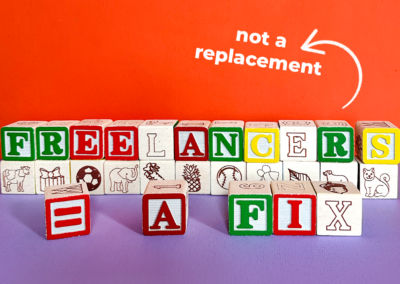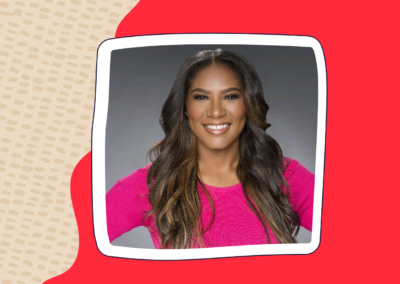This past Climate Week (NYC: Sept 20-26), we saw more brands, businesses and changemakers in the advertising and marketing industry publicly addressing climate change and committing to eco friendly initiatives, than ever before. While some of the information can be overwhelming, many of us are underwhelmed by the progress we’re making as an industry.
Creatives at large are digging a stake into a more sustainable ground to call out the numerous organizations still drilling for fossil fuels, and continuing business practices that contribute to growing carbon emissions. Yet one call out in particular stood out amongst the rest.
In case you missed it:
Clean Creatives, a group of media professionals backed by Fossil Free Media, co-authored this year’s F-List to expose the less-than-honorable client relationships between media, ad and design companies across the board. The F-List, titled “How Working for Fossil Fuel Clients Blocks Climate Action,” is dedicated to highlighting the discrepancies between many of the environmental commitments and initiatives big media companies claim to support, and the clients they take on whose businesses contradict that very same effort.
Though some of these numbers and relationships are jarring, the issue is not new. The industry is notorious for blurring the lines on what it means to support climate change by working with advertisers that have denied the existence of the global climate crisis, or campaigning for products or services that directly contribute to it.
The industry’s long standing reputation
As if looking into their crystal balls, editors Michael E. Porter and Forest L. Reinhardt at the Harvard Business Review predicted what’s beginning to happen in the marketing and ad industry today. In their 2007 op-ed piece “Climate Business, Climate Control” they warned that, “Companies need to anticipate the ways that climate change may directly affect their businesses, including supply-chain breakdowns, employee migrations, increases in disease, or even impact on reputation (multinational corporations may be blamed for climate-related environmental problems).
In 2014, the UK-based WPP, the world’s largest advertising firm by revenue and parent company of Burson Marsteller and Ogilvy Public Relations, said taking on a client or campaign disputing climate change would violate company guidelines. However in 2021, they, amongst other top media firms, are being called out on the F-List for working with big oil companies that play a significant role in contributing to climate change and carbon emissions. If you’re wondering how that’s not in violation of company guidelines—the answer is simple —the “150 companies within WPP make their own decisions on how they support clients and don’t rule out campaigns opposing regulations to cut greenhouse gas emissions,” according to the multinational holding company’s then-spokesperson Fiona McEwan.
Why is this so important?
During last year’s Climate Week, Solitaire Townsend, an entrepreneur, author and sustainability solutionist stated that “the fossil fuel industry has ploughed a whopping $1.4 billion into PR and advertising over the last decade, six times more than spent on renewable energy interests.” In her Forbes article, “This Is A Creative Emergency – Why Advertising Must Stop Playing Both Sides On Climate Change” she also shares that this ratio makes one thing clear: “the advertising industry is putting the weight of its creativity behind the causes of climate change, not the solutions to it.”
A report recently released by PR company Edelman, shows that 60% of employees would leave a company that is doing ‘fundamentally immoral’ work. The F-List also recognizes that an-ever growing number of millennials, Gen Z, and younger workers perceive the fossil fuel industry in “precisely those terms.”
The issue isn’t unique to the marketing and advertising alone, but is critical to address for the current state of the job market, and the future of work. According to “The Next Phase of Business Sustainability” published by the Stanford Social Innovation Review, “88 percent of business school students think that learning about social and environmental issues in business is a priority, and 67 percent want to incorporate environmental sustainability into their future jobs.”
What business leaders can do to drive change
1) Changing business infrastructure
A sure way to drive towards a sustainable future is by reflecting on how your business operates — both technologically and communicatively.
The rise of consultancies like Shelton GRP, are increasingly becoming accessible to business leaders. Not only do they provide guidance on business-making decisions, but also support implementing change that will promote a healthy and mutually beneficial relationship between the organization, its employees, customers and other stakeholders (like in many cases — the environment).
2) Hiring roles for sustainability
Organizations like boutique consultancy Reconsidered and nonprofit Work for Good, provide job boards that help candidates find positions at organizations focused on sustainability, or roles involved in the social responsibility sector of their choosing. Likewise, their services make it easier for employers to find candidates that match their criteria.
3) Educate yourself and spread awareness across your communities
Thanks to the internet, there are plenty of great business resources on addressing sustainability.
David Jaber, founder and CEO of Climate Positive Consulting, a firm that advances better decision-making through climate strategy, carbon footprint analysis, and greenhouse gas reduction, has authored a new book on how to evolve business strategies to ultimately eliminate your business’ carbon footprint. The book titled, “Climate Positive Business: How You and Your Company Hit Bold Climate Goals and Go Net Zero” will be available on October 11th.
Joining forums, social media groups, and online communities where other leaders share their business challenges and solutions on addressing sustainable business practices is also a way to engage with others and learn from their do’s and don’ts. Discussion-based groups like “Reconsidering Business” (on LinkedIn) encourage thought-provoking opinions, resources, content and jobs to be shared around sustainability, social impact and corporate social responsibility (CSR) initiatives.
4) Build transparent business values and stick to them
Posting on social media that your organization supports a cause is one thing. Creating a brand value, joining a movement that supports it, and actionizing towards a goal, is totally different. Unfortunately, not enough organizations either know how, or care enough to foster a value that they can authentically speak to.
James Winter, author of “Core Brand Values Examples: Why They Are Key to Differentiating Your Brand” explains that core values serve as the “compass that guides your brand story, actions, behaviors, and decision-making process.” He concurs that doing business brings about tough decisions, but that core values serve as a reminder to what’s important to your business, the people you’re serving, and enables you to make the right decision, effortlessly.
Another way of staying true to brand values, is saying “no” to clients whose values don’t align with yours. In the case of media agencies who committed to reducing carbon footprint and their fossil fuel clients, this would’ve made their relationship a big no-no. “Balancing your own integrity with client M.O. or values can be tricky,” says Edyta Pacuk, President at MarchFifteen Consulting Inc. “If the clash of values is dramatic, as a service provider I need to have the courage to step back and declare that I might not be the best resource to serve them.”
Best selling author and entrepreneur Andrew Griffith believes that in a world struggling with trust and transparency, business owners need to step things up. “It’s time for integrity – and only working with people who fit your ‘Ideal Clients Value Set’ is one way to ensure that you are never compromised.” Not only are working with clients who share similar values ideal, but it often leads to greater business outcomes. “If you target the clients who will fit with you, share your values and beliefs, you will grow a much stronger, more sustainable business where great clients recommend their peers, with the same value set as their own, to your business.”
5) Legal accountability for environmental change
Consider becoming B Corp Certified to keep your business legally accountable for its social impact efforts. The certification, allotted by the nonprofit B Lab, holds that B Corp organizations are legally required to “consider the impact of their decisions on their workers, customers, suppliers, community, and the environment.”
Outdoor and apparel brand Patagonia took the B Impact Assessment prior to receiving its B Corp Certification. They used their mission statement as a reference tool to answer some tough questions that measure the performance of its programs.
Patagonia’s mission statement: We strive to make the best product, cause no unnecessary harm, (make our products with the least impact possible), and inspire and implement solutions to the environmental crisis (we do our best to accomplish this by conducting our business in a way that incorporates environmental considerations as well as contributing money and in-kind donations to a wide variety of environmental non-profits that are dedicated to protecting the earth’s many wonderful things).
In Patagonia’s B Corp case study, Elissa Loughman, Environmental Analyst at Patagonia, explained that the assessment allowed Patagonia to reflect on its strengths, and identify opportunities for improvement.
Looking ahead
Today, there are numerous small, mid-size and large businesses that serve as excellent examples of what it means to have a successful CSR program. Even without a CSR initiative, you can start educating yourself, your employees and your family on how to reduce the effects of climate change, and work towards eliminating carbon emissions.
Next month, tune into the TEDx’s Climate Countdown where TED speakers share a blueprint for a net-zero future. The plan will be shared alongside stories filled with actions from local communities, and will be followed by hundreds of TEDx Countdown events around the world, and through a special global livestream event on October 30th.
Take a step with Count Us In, a project filled with inspiration on how you can personally take action at home (and tailor to your workplace) and in the world to reduce your carbon footprint.
Whichever methods you decide to engage with, there is no shortage of ways to contribute to the fight. For more information on how your business can get involved, read 10 actions that companies can put in place to fight climate change.
Dominque’s: LinkedIn, Twitter, Instagram



